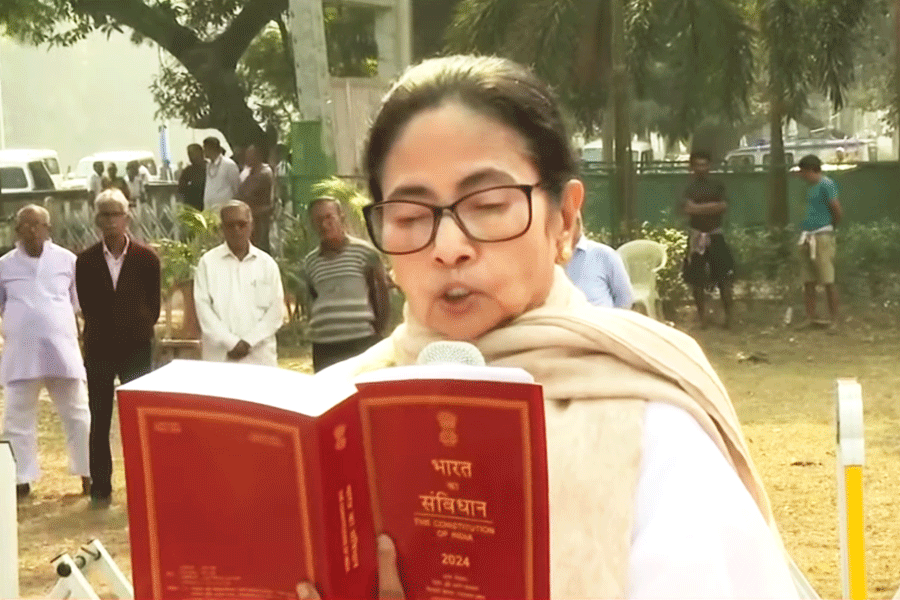 |
Dipankar Sinha, director-general (town planning) of the Calcutta Municipal Corporation, met readers of The Telegraph and answered their queries. Participants included Sarmistha Lahiri, Bidyut Banerjee, Lalit Singh Nahar, Shankar Ghosh, Talat Salahuddin, Tithi Chakroborty, Chanchal Sarkar and Arka Sen
Sarmistha Lahiri: Local promoters and land-grabbers are filling up the wetlands on the city’s fringes and minting money. A few decades ago, the state government and its agencies had similarly filled up the wetlands in the city. Rabindra Sadan, Nandan, Rotary Sadan, Jawaharlal Nehru Children’s Museum, Bhasha Bhavan of National Library, were all constructed by filling up waterbodies and wetlands. Do you agree that this has been an organised assault on the waterbodies and the government is responsible for the present-day waterlogging problems in the city after each heavy shower?
It is true that a few decades ago, a number of waterbodies in the Park Street, Lindsay Street and AJC Bose Road area were filled to construct buildings. And it is also a fact that waterbodies act as bowls to hold the excessive water after heavy downpours.
 |
| School students inside the Town Hall museum. Pictures by Kishor Roychowdhury |
But that does not mean the government does not want to conserve the waterbodies. Actually, at that time (a few decades back), the government was not aware of the utility and role of waterbodies in our environment. Even the legal provisions then did not forbid filling up of wetlands. Rather, a few legal provisions encouraged the filling up of excessive wetlands to make space.
Bidyut Banerjee: Can you elaborate on how some of the legal provisions encourage filling up of wetlands and ponds?
Take the example of the West Bengal Town and Country Planning and Development Act, 1979. It allowed change of land use with permission and there was no separate provision for the waterbodies.
Also, the CMC Act, 1980, said that if a waterbody breeds mosquitoes, it can be either cleaned or filled up.
It was for the first time in the late 1990s that the CMDA, in its Land Use and Development Control Plan (LUDCP), imposed a ban on the filling up of ponds and wetlands.
In the Fisheries Act, 1984, there is a ban on the filling up of waterbodies which are spread over more than five cottahs.
Also in the CMC Act, 1980, it has been mentioned that its provisions will not supersede the provisions contained in any other Act.
Hence, filling up of waterbodies by the government or any of its agencies is not possible now.
I would like to point out that it was due to the Calcutta Municipal Corporation (CMC) Act that Indian Museum’s attempt to fill up the Jinjira Talao in their backyard was prevented.
Bidyut Banerjee: Do you think your Calcutta Panorama in the Town Hall has aptly showcased the 300 years of socio-economic and cultural heritage of Sutanuti, Kali Kota and Gobindapur?
I want to point out the history of Calcutta is over 300 years. It is obvious that there were settlers in Gobindapur, Sutanuti and Kali Kota before the arrival of Job Charnock. Hence, the socio-economic and cultural history of this area is much older than 300 years. Besides, there is no cut-off date of when the urbanisation of the area started.
However, in the Town Hall, we have only 10,000 sq ft to showcase the city’s history. We have tried to present the momentum of history in a different manner. A museum is not built overnight. It grows gradually by enriching its treasures.
Do you have a copy of the original settlement deed of the Sabarna Roy Chowdhurys in the city museum at the Town Hall?
No, we don’t have it at this moment. We have it in the CMC headquarters.
Lalit Singh Nahar: For how many people are you are drawing up the town plan?
According to our estimates, Calcutta’s night population is around 55 lakh. Another 45 lakh people enter the city daily from its fringes on week days. The town plan will cover every one linked to the city.
Bidyut Banerjee: Earlier, the stretch from Elgin Road to Park Street had beautiful bungalows dating back to Raj. Why have you destroyed this beautiful landscape by introducing the Land Ceiling Act?
A city changes with time. The land use pattern in Calcutta started changing from the mid-1970s. Housing is now a vendible commodity. As commercial utilisation of land is the main principle of these schemes, the gardens and the beautiful terraces were dropped from the housing plans.
To be concluded










